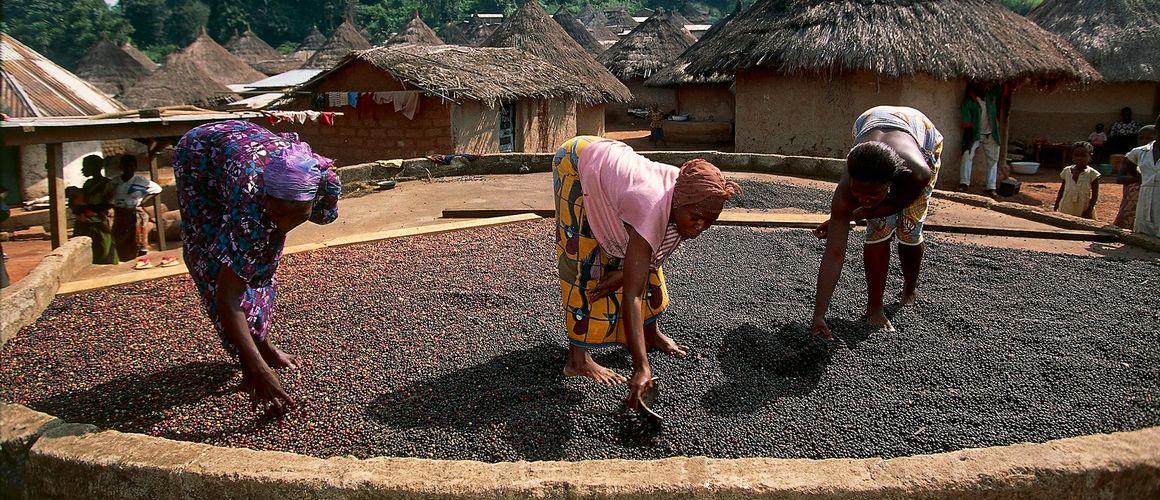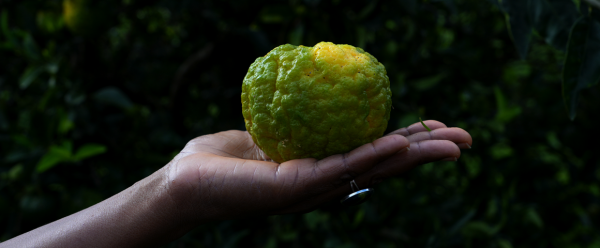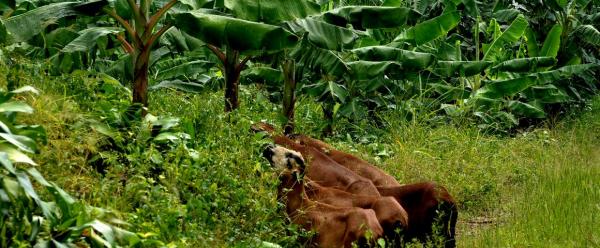Science at work 19 December 2025
- Home
- CIRAD news
- News
- Bio4Africa Project
Bio4Africa: farm income diversification through residual biomass

Agricultural waste, or residual biomass, is a veritable gold mine. It can be turned into animal feed, fertilizers, pollutant removers, cooking fuel or packaging © Bio4Africa
Using agricultural waste to diversify the income of farmers in Africa. This is the goal of an international consortium involved in the Bio4Africa project since June 2021. If integrated into a circular economy approach, agricultural waste – or residual biomass – is a veritable gold mine. It can be turned into animal feed, fertilisers, pollutant removers, cooking fuel or packaging.
The cross-cutting nature of the bioeconomy is a unique opportunity to address interconnected societal challenges: food security, the depletion of natural resources, climate change and fossil fuel dependency.
In total, seven processing methods are being implemented in four pilot areas in Ivory Coast, Ghana, Uganda and Senegal: biorefining, pyrolysis, hydrothermal carbonisation, briquetting, granulation, biocomposites, and bioplastics. These simple bio-based technologies, which are adapted to residual biomass and to local needs and contexts, are being tested in real conditions by 300 individual farmers and farmers’ groups of all sizes.
In rural Africa, the bioeconomy is a real opportunity to tackle hunger, which affects almost 20% of the population, while driving inclusive rural development.
The Bio4Africa project aims to transfer low-cost, adapted technologies to local academic institutes. “We will work to develop a local market to enable communities to adopt these tools”, says Jean-Michel Commandré, Coordinator of the project and Director of the BioWooEB research unit at CIRAD. “The challenge is to ensure this market remains in place once the project has ended”.
From March 2022, a first technology will be tested in Uganda, then in Ghana. This is a biorefining unit developed by the company Grassa. Local farmers will provide residual biomass from legume production: alfalfa, cassava or velvet bean. Once processed into press cakes, this waste is a good source of animal feed. “This feed is very rich in protein and can be used to diversify cattle feed”, says Patrick Rousset, a researcher at CIRAD and Technology Officer for Bio4Africa. “When granulated, it is easy to store and provides a useful form of feed for nomadic herders in Ghana”. The unit is the size of a shipping container and is designed to be easy to move where required by farmers using a flatbed truck. Ultimately, the consortium aims to reach a production capacity of one tonne of residual biomass per hour. Production could be subject to the availability of residual biomass, and therefore to the seasonality of crops.
Another example of a processing method is pyrolysis. Heated to a high temperature in the absence of oxygen, residual biomass is transformed into charcoal. It is used as cooking fuel, as a soil amendment in the form of biochar, or as a pollutant remover.
In Ivory Coast, one of the objectives is to set up water filtration systems using activated carbon. Equipped with solar pumps, the filtering units being tested should supply two rural villages that currently have no drinking water. “Traditionally, charcoal is made from wood in Africa”, says Jean-Michel Commandré. “The originality of our process, developed in partnership with Universidade Federal de Viçosa in Brazil, lies in the use of agricultural waste”.
Eight farmers’ cooperatives will provide cashew nut shells and palm kernel shells to test this technology.
The project is supported by the EU Horizon 2020 Research and Innovation Programme, with a total budget of nine million euros. It is coordinated by CIRAD’s Biomass, Wood, Energy, Bioproducts research unit (BioWooEB). The 13 African partners (in Senegal, Ivory Coast, Ghana, Uganda and Kenya) and 12 European partners (in France, Greece, Ireland, Spain and the United Kingdom) have a period of four years to conduct this research.



























